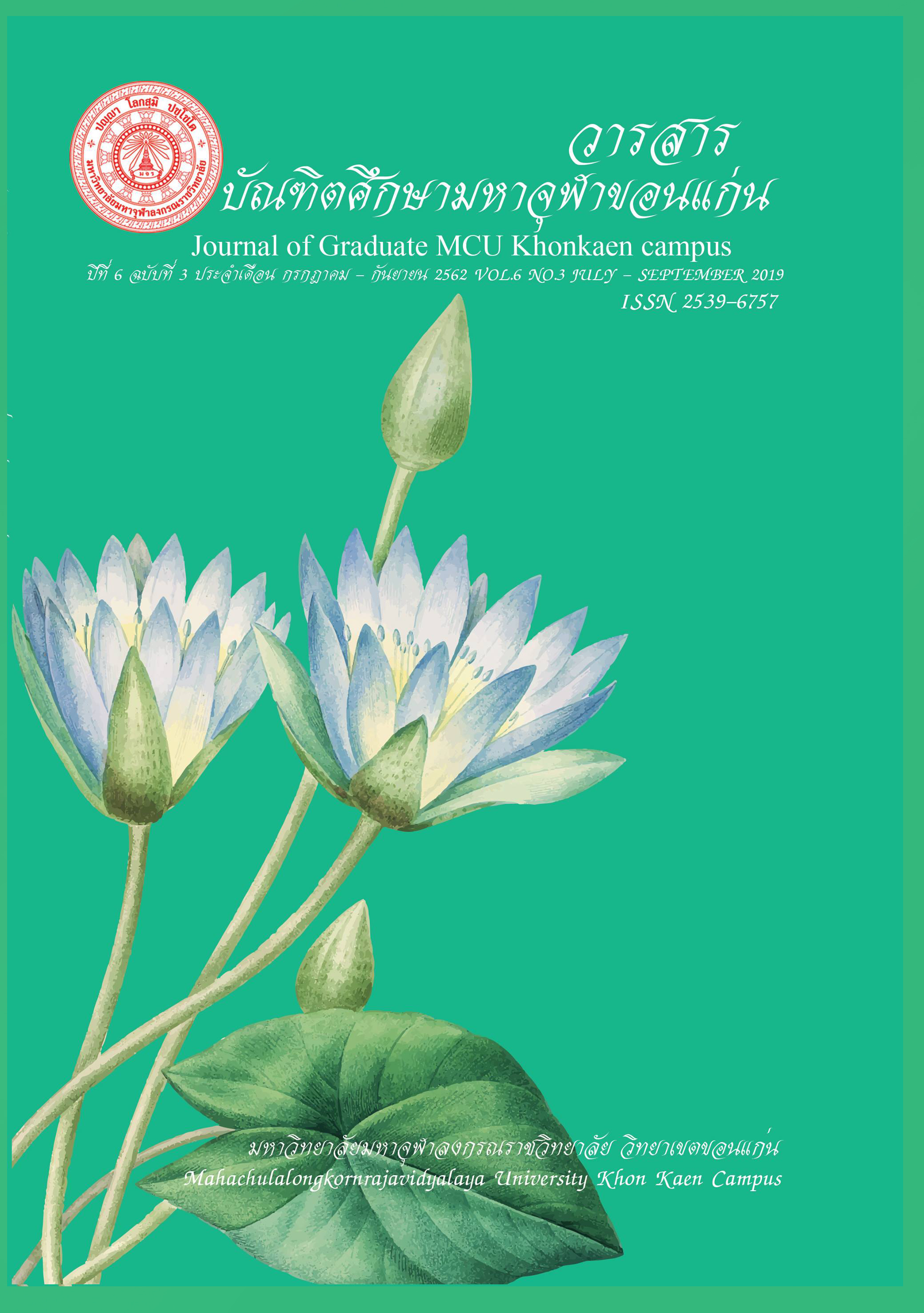Strategy in Buddhist Transformational Leadership Development For Administrators in PhraPariyattidhamma Schools General Education Division
Main Article Content
Abstract
The main objective of the study (1) to study the contexts of Buddhist transformational leadership for administrators in Phapariyattidhamma Schools general education division group I (2) to develop strategy in Buddhist transformational leadership development for administrators in Phapariyattidhamma Schools general education division group I and (3) to present the strategy in Buddhist transformational leadership for administrators in Phapariyattidhamma Schools general education division group I.
Research methodology was a mixed method research by mean of applying the qualitative research and qualitative research. The qualitative research was conducted by in-dept interview from the key informants before the focus group discussion for developing the completed model.
The findings were conducted as follows:
- The contexts of Buddhist transformational leadership for administrations in Phapariyattidhamma Schools general education division group I had 40 variations which consisted of 4 important factors, (1) vision factors (Cakkhuma) got4.38 pointing that the administrators must have vision and ability for position (2) skillfulness factors (Vidhuro) got4.48pointing that the administrators must have an activeness of training ofnew work and develop the quality of work (3) relationship factors (Nissayasampanno) got 4.41pointing that the administrators must have cavity, concentration, intention sociability, good emotional management, friendliness, helpfulness, admiration, expression and working relationship and (4) moral factor (Brahmavihara 4) got 4.43 pointing the administrator must support and help the staff to solve the problem and decide with reason and attend to the problem and the obstacle of organization honestly.
- Developing strategy in Buddhist transformational leadership development for administrators in Phapariyattidhamma Schools general education division group I, the administrators had the vision, analyzing the strategy, reasonable making a decision, creativity, supporting more education, working with the Dhammas consisting of loving-kindness, compassion, sympathetic joy, equanimity.
3.Presenting the strategy in Buddhist transformational leadership development for administrators in Phapariyattidhamma Schools general education division group I, the administrators had vision and experience of teaching and research, ability of organization, honesty, consult with right answer and compactness and hearing other opinion and taking care all the staff.
Article Details
References
สงเคราะห์เกี่ยวกับเด็กและสตรี”, วิทยานิพนธ์รัฐประศาสนศาสตรดุษฎีบัณฑิต,
(คณะรัฐประศาสนศาสตร์: สถาบันบัณฑิตพัฒนบริหารศาสตร์, 2554).
จันทรานี สงวนนาม, ทฤษฎีและแนวปฏิบัติในการบริหารสถานศึกษา, (กรุงเทพมหานคร: บุ๊คพอยท์,
2545), หน้า 13.
ชรัตน์ จีนขาวขำ , การศึกษาภาวะผู้นำการเปลี่ยนแปลงของผู้บริหารสถานศึกษาตามการรับรู้ของ
ข้าราชการครู สังกัดสำนักงานเขตพื้นที่การศึกษาชลบุรี เขต 3, วิทยานิพนธ์ กศ.ม มหาวิทยาลัย
บูรพา, 2547), หน้า 20.
ทิพาวดี เมฆสวรรค์,กล้าคิด กล้าทำ กล้านำ กล้าเปลี่ยน, พิมพ์ครั้งที่ 2., (กรุงเทพมหานคร :
เอ็กซเปอร์เน็ท,2545), หน้า 10.
วิโรจน์ สารรัตนะ, การบริหารการศึกษา: นโยบายและยุทธศาสตร์เพื่อการบรรลุผล,
(กรุงเทพมหานคร: โรงพิมพ์ทิพย์วิสุทธิ์, 2546), หน้า 25.
สงวน รัมพงศ์ และนิตยา รัมพงษ์, ภาวะผู้นำกับธรรมาภิบาลในการบริหารงานองค์กรปกครองส่วน
ท้องถิ่น สถาบันพระปกเกล้า, (กรุงเทพมหานคร: ส เจริญการพิมพ์, 2540). หน้า 83.
Charles E. Scott and John J Siegfried, “American Economic Association”, American
Economic Review, vol. 102, issu 3: 31-34
J. Ritchie and J. Lewis, Qualitative Research Practice, (London: Sage, /2003), pp. 109 – 137.

